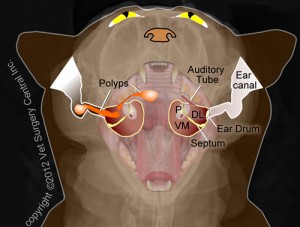


Obstruction of the eustachian tube can be functional, as in the case of cleft palate, in which maldevelopment leads to ineffective tensor veli palatini contraction. 10 A similar phenomenon can occur when the middle ear-mastoid air cushion cannot be maintained because of a tympanic membrane perforation. 9 The latter condition, known as a patulous eustachian tube, allows reflux of the nonsterile nasopharyngeal contents into the middle ear space, also predisposing to infection. This impairs emptying of middle ear secretions and predisposes to otitis media by providing a favorable environment for bacterial growth. In the first case, a poorly opening tube prevents pressure equalization between the middle ear space and the ambient environment, leading to progressive gas absorption and negative pressure in the middle ear space. 8ĮTD can manifest as either a tube that does not open effectively or one that does not close effectively. The middle ear and mastoid provide an air cushion that, when combined with the normally closed eustachian tube, effectively prevents the reflux of nasopharyngeal contents into the middle ear space. 7 Under normal conditions, the eustachian tube equalizes the pressure of the middle ear-mastoid system with the external environment through intermittent active contraction of the tensor veli palatini muscle. POTSIC MD, in Pediatric Otolaryngology, 2007 Eustachian Tube DysfunctionĮustachian tube dysfunction (ETD) is an important pathophysiologic factor in many cases of chronic middle ear disease, and it can also be considered one of those chronic conditions. He is Associate Professor of Behavioral Medicine at North Central University, and Director of Research at DigiCare Hearing Research & Rehabilitation. His works are available in textbooks, hundreds of papers and articles, and on the Internet. Chartrand has served actively in the hearing health field for almost 32 years. For more definitive information on the various types of tinnitus and middle ear relationships, the reader may go to Dr. However, often there are cochlear, vascular, and other overlays that leave some remaining or changed expression of tinnitus. Since we are speaking primarily of objective tinnitus here, we expect the tinnitus to subside with treatment. Only a physician can determine appropriate treatment. Treatment varies according to underlying etiology, involving decongestants, antihistamines, antibiotics, surgery, manipulation, etc. In some cases, other palatal and middle ear structures may be involved, bringing even more complex descriptions of tinnitus.

If the Eustachian stays open (Patulous) as from physical abnormality, one will likely experience another type of objective tinnitus: described as an ocean roar or hollow effect, like a sea shell.All of this, of course, can be ascertained through tympanometry, otoscopy, and other diagnostic measures. It is that in-between state that presents varying types of possible objective tinnitus: roaring, buzzing, humming, heartbeat, and in some cases, spasm of the tensor tympani and/or venous hum (when the pressure on vascular structures and surrounding tissues become too great). If uninterrupted, it will continue to do so until the pressure can cause tympanic membrane perforation. The ensuring vacuum causes the cavity to fill with mucous. If the Eustachian tube stays closed, as during inhalant allergy, head cold, or middle ear infection, the oxygen trapped in the middle ear cavity is soon absorbed into the mucosa, creating a vacuum.At this point, there are two main tinnitus/Eustachian abnormalities that can occur here: In terms of swallowing, the most common form of activation, it is estimated that about every third or fourth swallow causes the tensor tympani to open the isthmus area so that the otherwise air-tight middle ear cavity can equalize air-pressure to that of the external auditory canal (EAC) side of the tympanic membrane. The tensor tympani muscle, the muscle connecting the tympanic membrane with the upper end of the Eustachian tube, opens the normally-closed isthmus by yawning, swallowing, and less dependably by chewing. The human Eustachian tube is of immense importance in regulating the cavity of the middle ear as well in contributing to voice modulation. Question What is the relationship between Eustachian Tube Dysfunction and tinnitus? Can it cause or accentuate tinnitus? And how can it be relieved? Answer


 0 kommentar(er)
0 kommentar(er)
